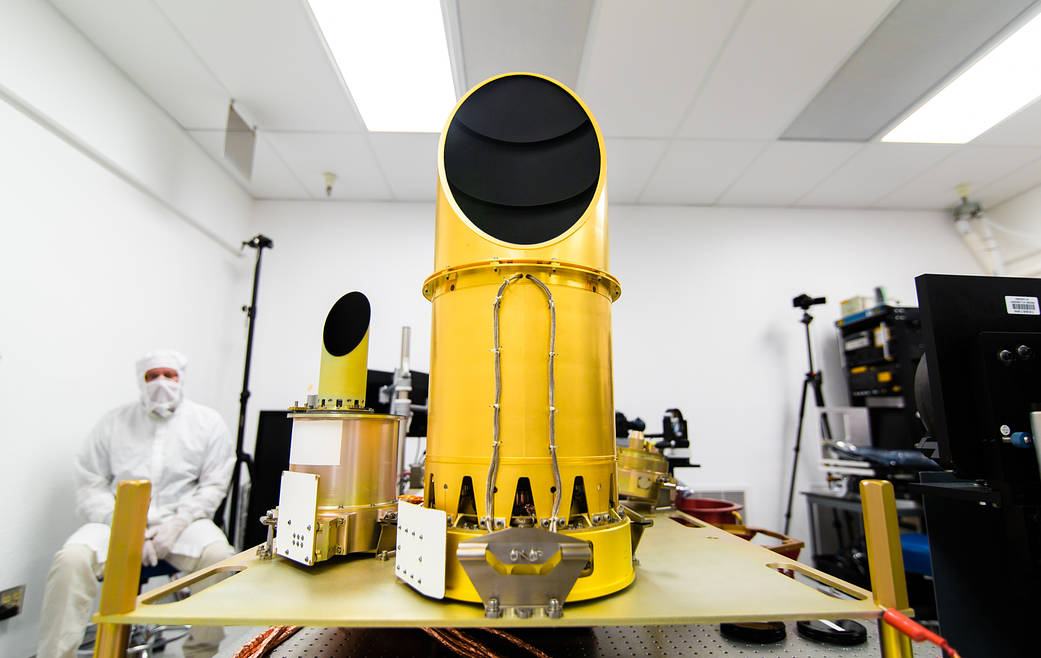OSIRIS-REX is a space mission, that aims to collect asteroid samples from near-earth space for study. The study of particles will tell us the story of evolution in more detail. NASA has confirmed that OSIRIS-REX has collected enough particles. So, now it will come back to the Earth.
This is a dry mass of about 880 kg. And, NASA had launched the mission on 8 September 2016. It flew from the earth on 22 September 2017 and will land on 24 September 2023.
How OSIRIS-Rex formed?
OSIRIS-Rex is Stands for
O- Origins
SI- Spectral Interpretation
RI- Resource Identification
S- Security
Rex- Regolith explorer
Mission to Achieve:
The main aim of this is to collect approximately 60g of the material from asteroid Bennu and bring it back to the earth. The researchers will find it out from which surface they need to contain the material. It will return in the form of a capsule of about 46kg. The capsule will land with the help of a parachute at Utah Test and Training Range in September 2023.
When will it happen?
In the last few days, the cameras observed the collection chamber was losing some particles, and they were floating away. They tried to collect many particles due to which the opening and the closing lid remains open and was not fully shut down, so the particles were escaping in the space.
When OSIRIS-REX touched down the surface of the Bennu, the collected particles went much deeper. Then it would define how the material was recovered.
Loss of the material:
It’s terrific to lose the material collected. The material was swirling like the movement of the arms. Lauretta approximately said about 10 grams has been flown away from the collected material. However, the loss was not too much.
What would happen next?
Now you must be thinking about what will happen now? The mission is going on, and the material collected in the spaceship is thoughtfully depreciating. It will cause more material loss, and it is about 60grams to lose. But let’s hope for the best. OSIRIS-REX will reach earth in March and will surely bring back the material for further analysis in the year 2023.
When Would The Sample Return To the Earth:
It will reach the earth’s surface on 24 September 2023. The sample would return packed in the capsule and would land under a parachute at the Air Force Utah Test and Training Range.
Scientists will thenl examine the sample at NASA’s Astromaterials Research and Exploration Science Directorate (ARES) and at Japan’s Extraterrestrial Sample Curation Center.
Scientific objectives: The mission has scientific objectives attached with it/ they are as follows:
- The returning of the sample will be examined to study more about nature, history, and how its constituent materials are distributed into organic compounds.
- It characterizes its geographic and dynamic history to provide the contents of the returning samples.
Specifications:
- Dimension: its dimensions are 2.4m by 2.4m or 7ft 10in by 7ft 10 in in length and width and its height measures 3.15 m, i.e., 10.3ft
- Its width with the solar arrays measures 6.17m or 20.2 ft.
- Power: There exist two solar arrays that emerge from 1226 to 3000 watts that completely depends on the distance of it from the solar surface.
- Constituents: It carries along with it 1230 kg of propellant and helium.
Various instruments: OSIRIS-REX uses Various instruments to take images of the asteroid and to retrieve the sample of the asteroid.
- OCAMS: OCAMS expands as OSIRIS-Rex Camera Suite (OCAMS). The Job of OCAMS is to capture the global images, sample images of high resolution. Certainly, it records the acquisition of the sample.
- OVIRS: OVIRS is abbreviated as OSIRIS-REx and IR Spectrometer. This is a spectrometer that gathers minerals and organic substances at the surface of the asteroid.
- OTES: This expands as OSIRIS-REx Thermal Emission Spectrometer (OTES). It provides thermal emission information and maps mineral and organic substances.
- REXIS: REXIS expands as the Regolith X-Ray Imaging Spectrometer. This traps the X-Ray of Bennu to map the substances present in abundance.
- OLA: the OSIRIS-REx Laser Altimeter (OLA) is an instrument that provides high-quality topographical information all together on the mission.
- TAGSAM: Touch-and-Go Sample acquisition Mechanism (TAGSAM)is a sampling return system.




